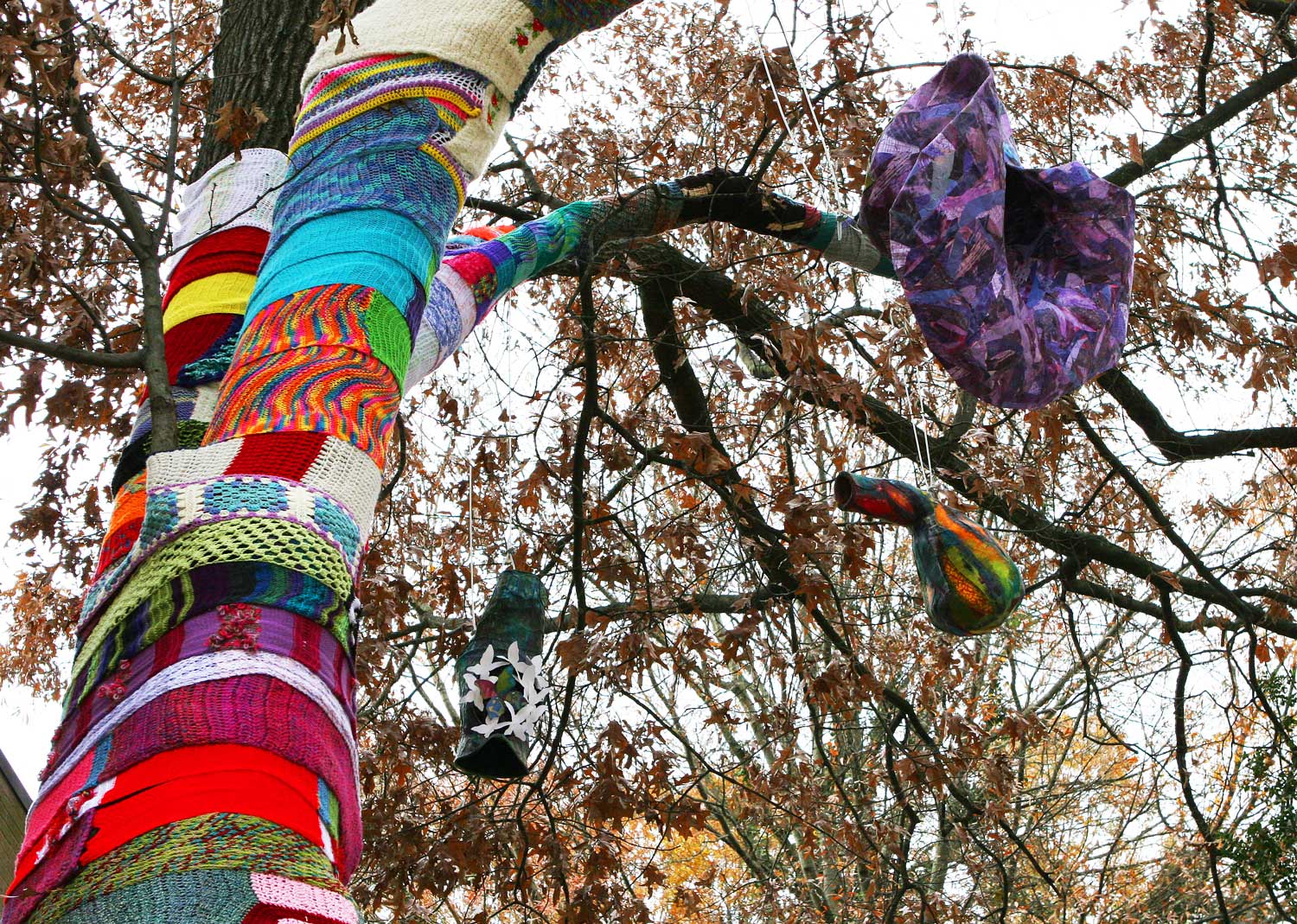Downtown Living Glenwood South Published December 3, 2014 at 3:23 pm No Comments
On Wednesday, December 3 at 9:30 knitters from Glenwood South gathered to finish wrapping more than a hundred scarves around one of the oldest and largest trees on the block at 201 Glenwood Avenue. This year it took two lifts to allow artists to reach branches that loom high over the two story Duncan-Parnell building, whose history on the street dates back to 1978, (when they were located at 400 Glenwood Ave.)
More than sixty knitters have participated in Glenwood South’s second annual tree sweater project, this time attracting knitters from as far away as Hawaii, Texas and even Ontario.
“Sweaters have been flowing in, sometimes made by mothers of Glenwood South residents, who have heard about the project,” comments Donna Belt, project organizer, “I was really surprised to find a box at my door this week, sent by one of last year’s knitters, who has since moved out of the country.”
But most of the scarves were made by community knitters who met at St. Saviour’s Center to stitch with seniors who were recipients of last year’s tree sweater blankets. Inspired by the colorful statement of community shared with them, knitters at St. Saviors and Glenwood Towers determined that this year they would host the knitting and pass the scarves on to Love Wins, a ministry to the homeless led by Hugh Hollowell in the Glenwood South neighborhood.
Other additions this year include three large fiber sculptures created by Amanda Snavely, a 1996 graduate of NC State University College of Design.
The project was organized by the Glenwood South Neighborhood Collaborative, and in addition to all the knitters, was made possible by artist Amanda Snavely, St. Saviour’s Center, Duncan-Parnell, United Arts Council, (whose volunteer Julia Mastropaolo helped at every step). Sponsorship for hanging the scarves provided byDowntown Raleigh Alliance, Hampton Inn & Suites and Hibernian, Cornerstone Tavern; and finally Brueggers for hosting the knitters on December 3. -As Published by Raleigh Downtown Living Advocates



















